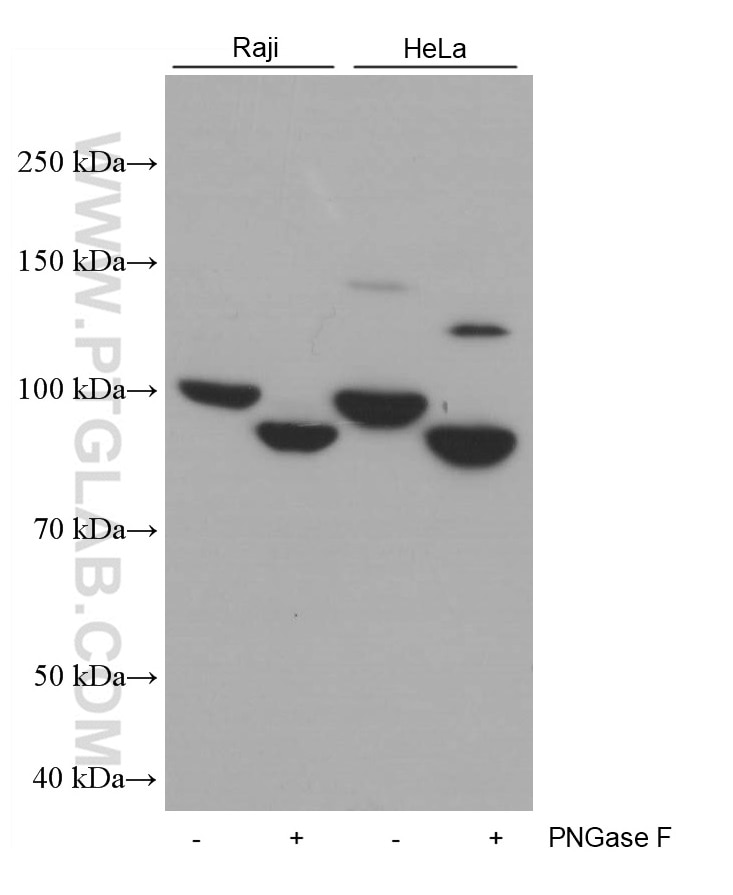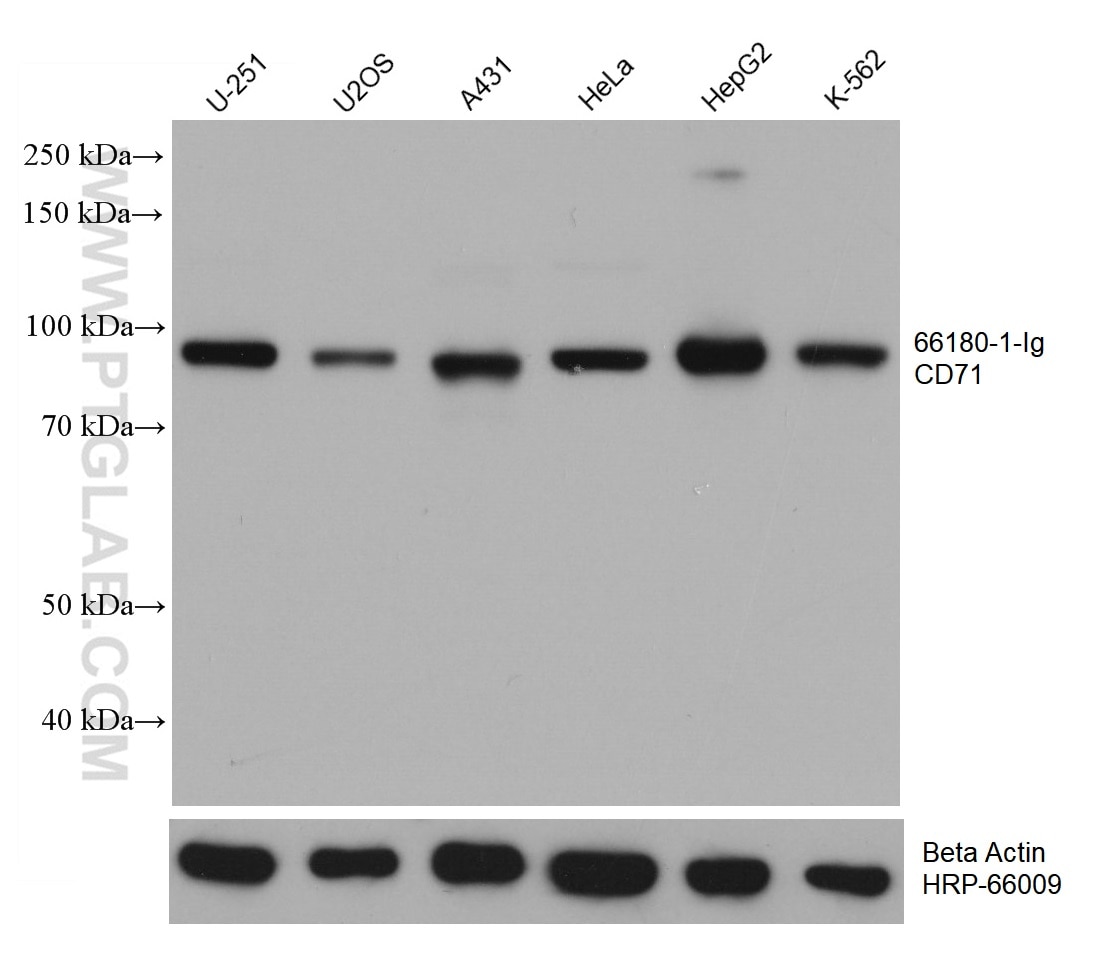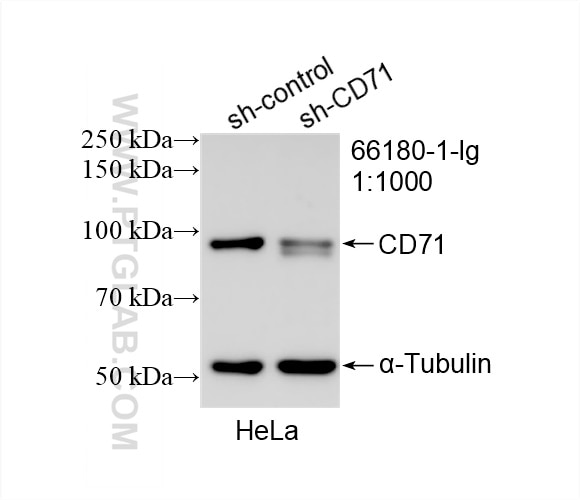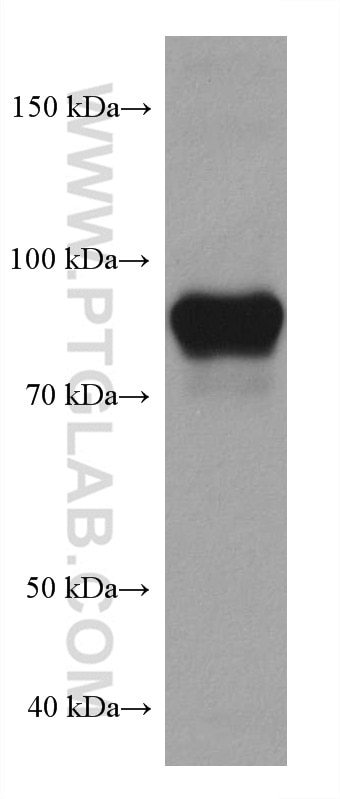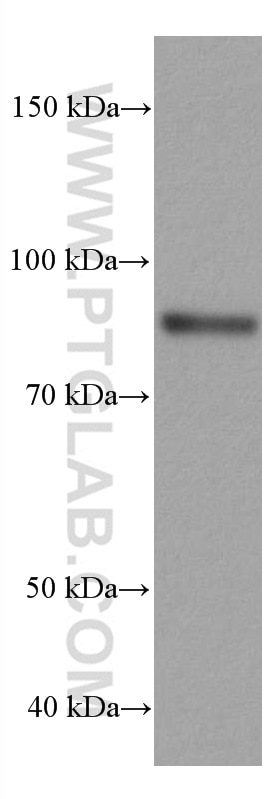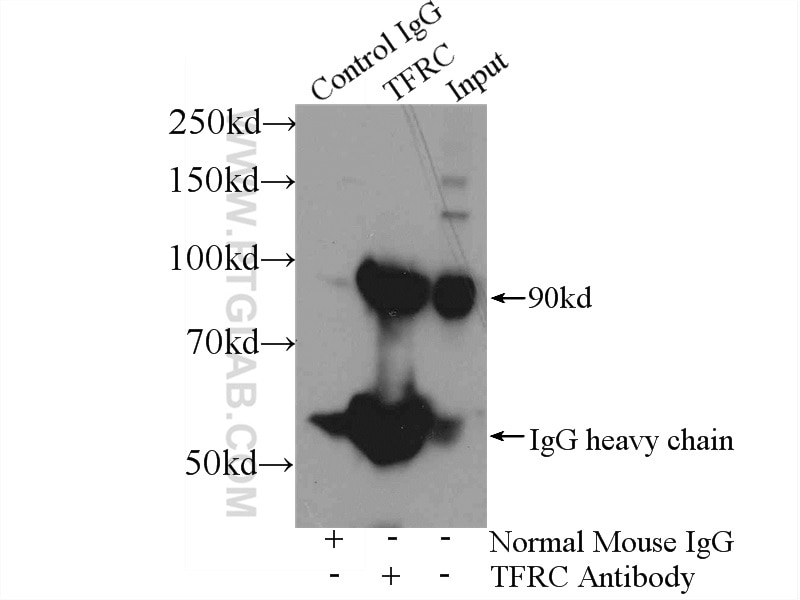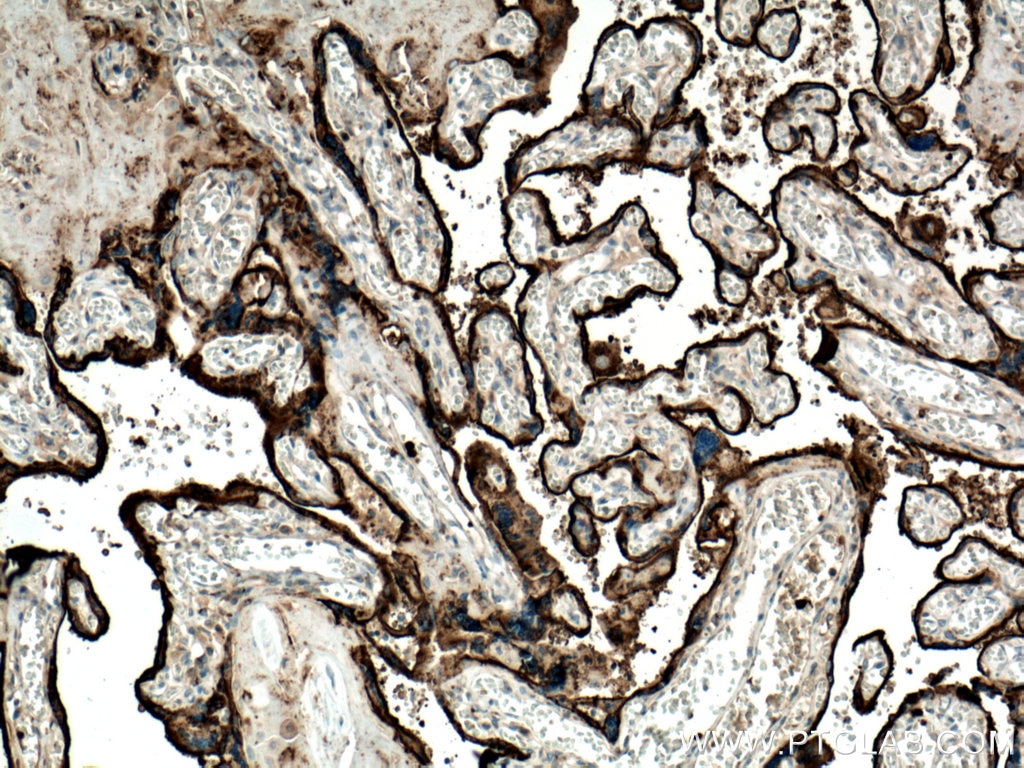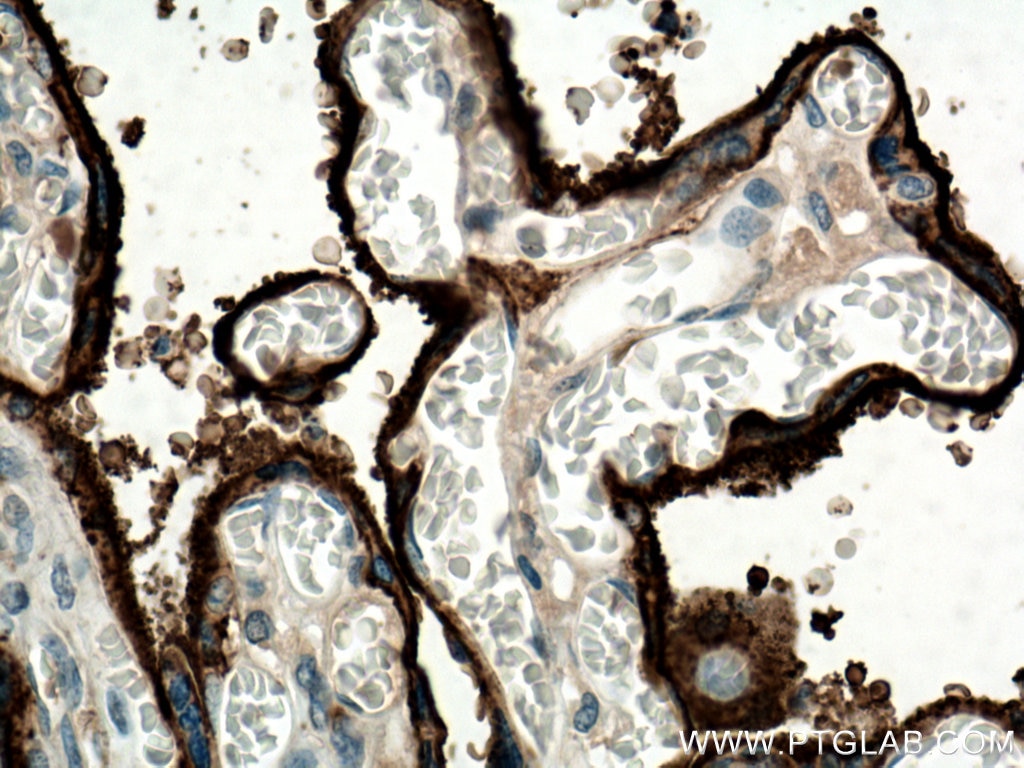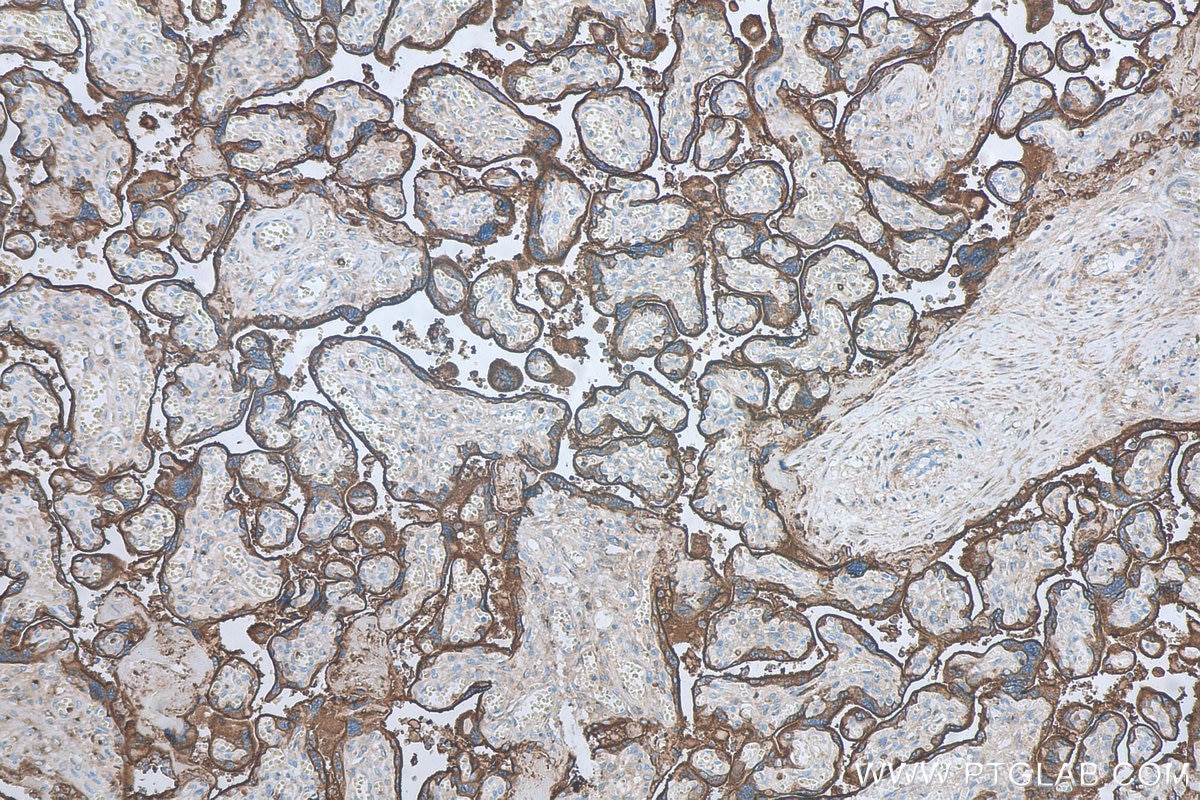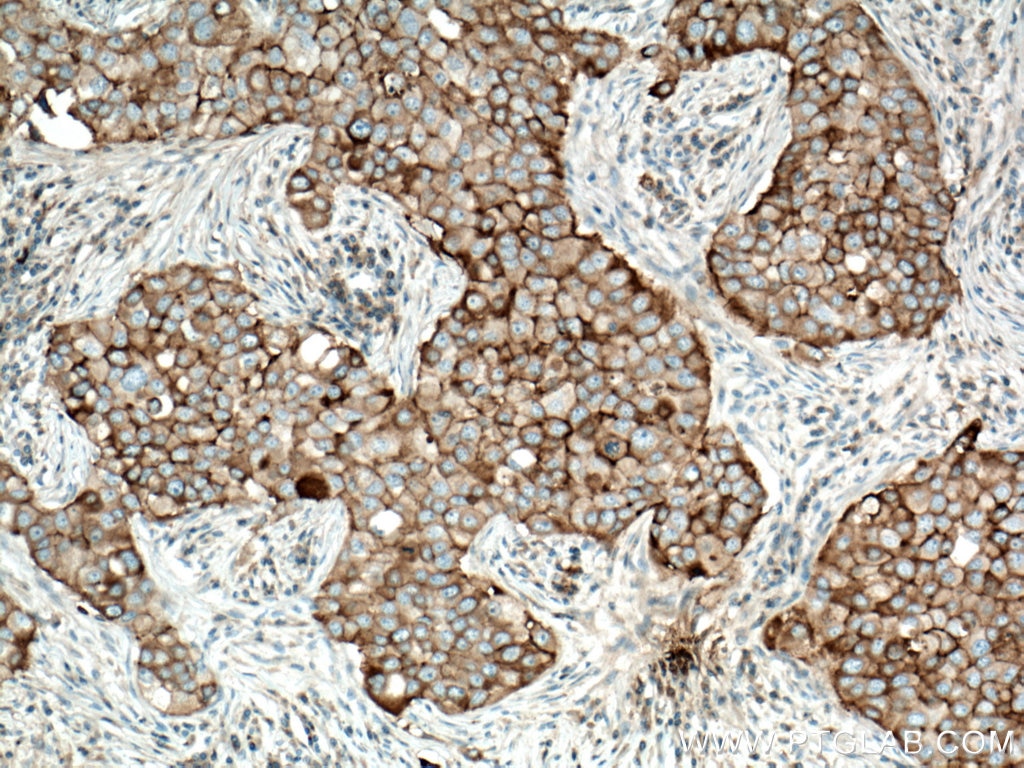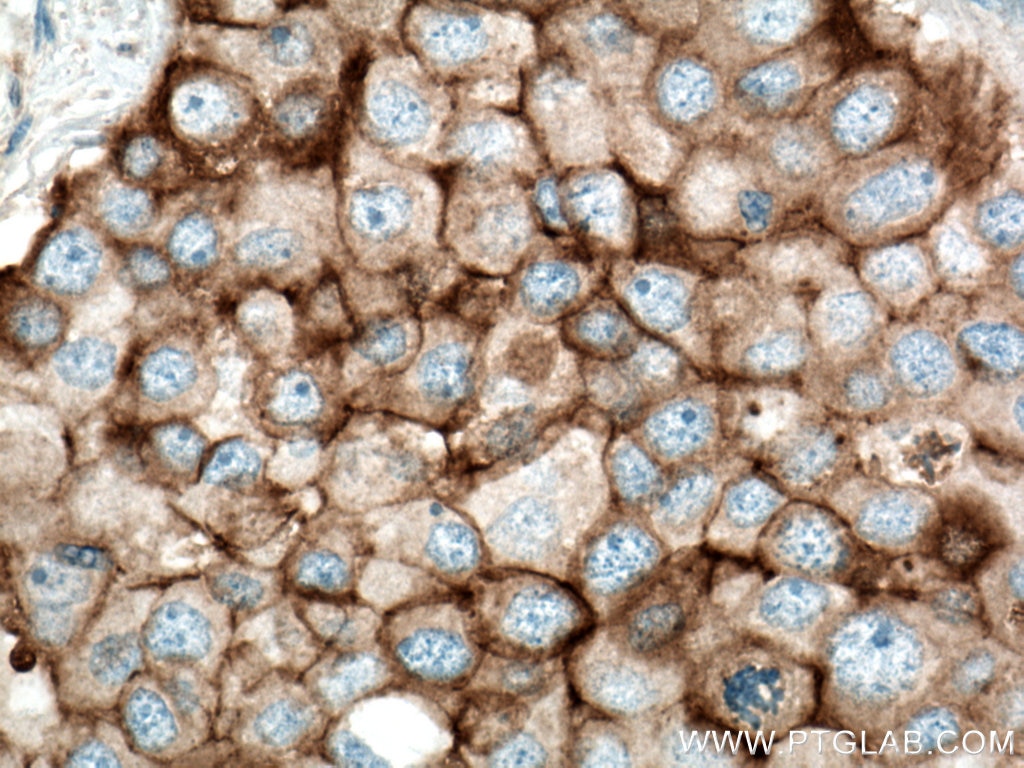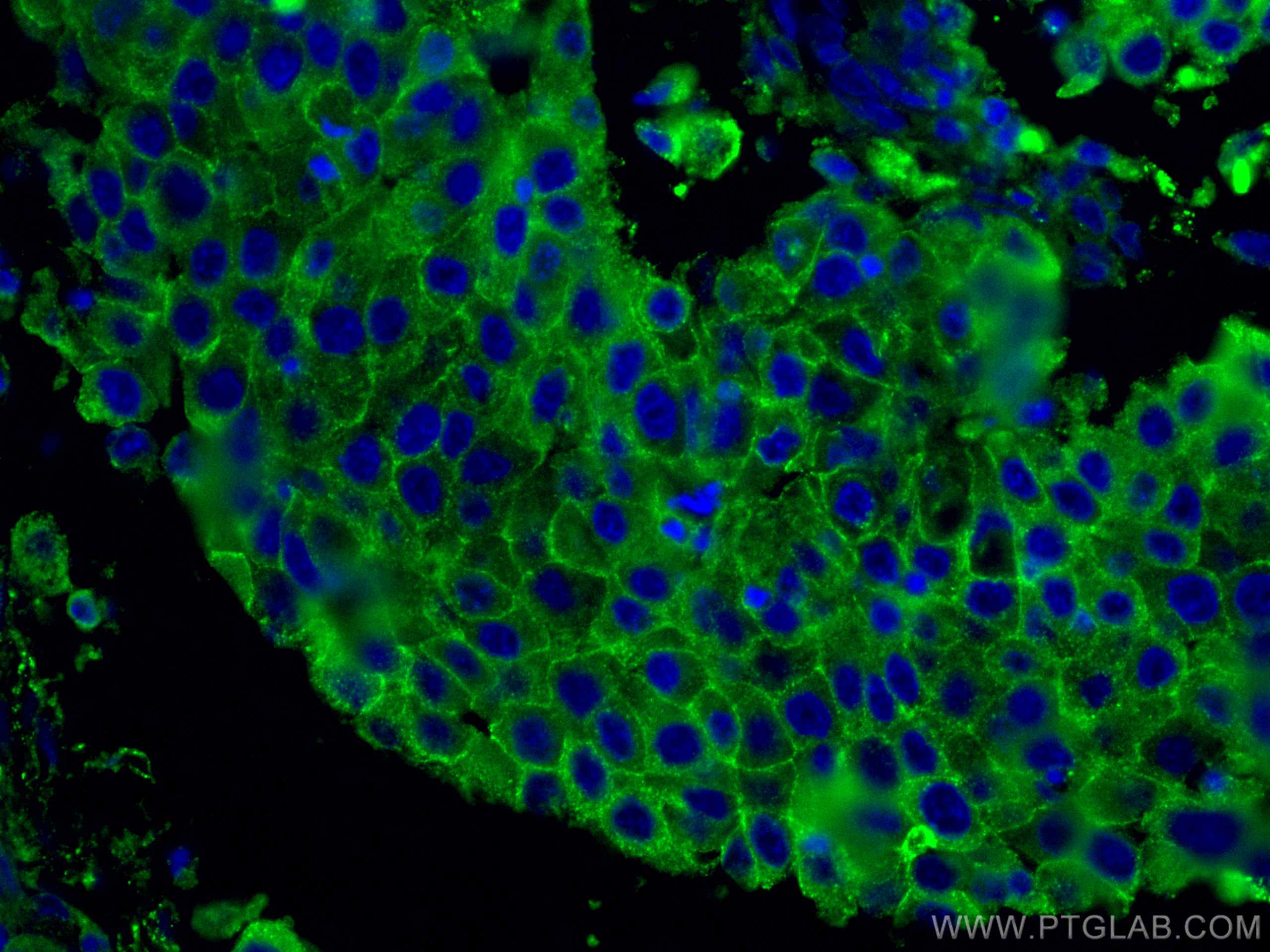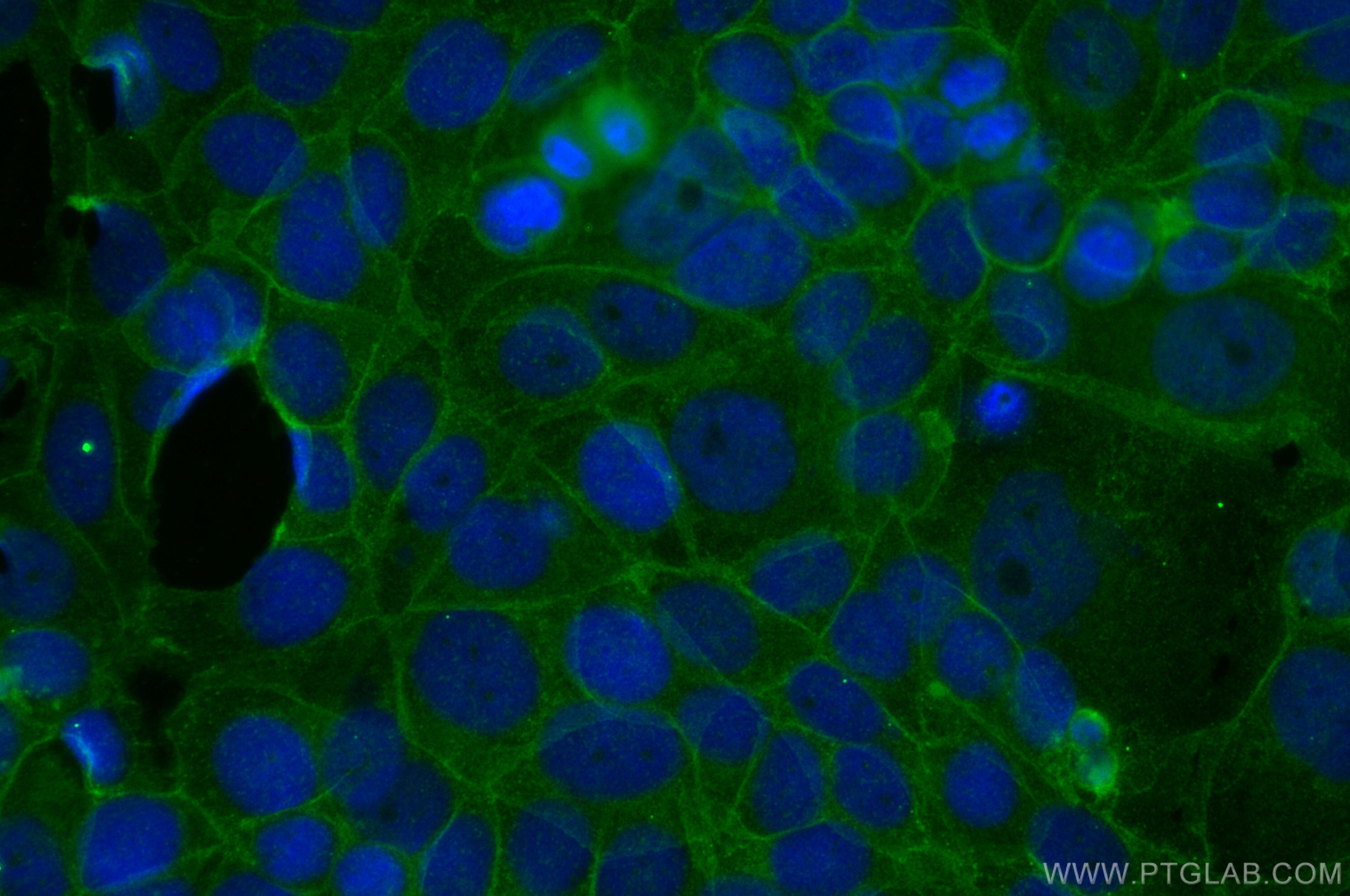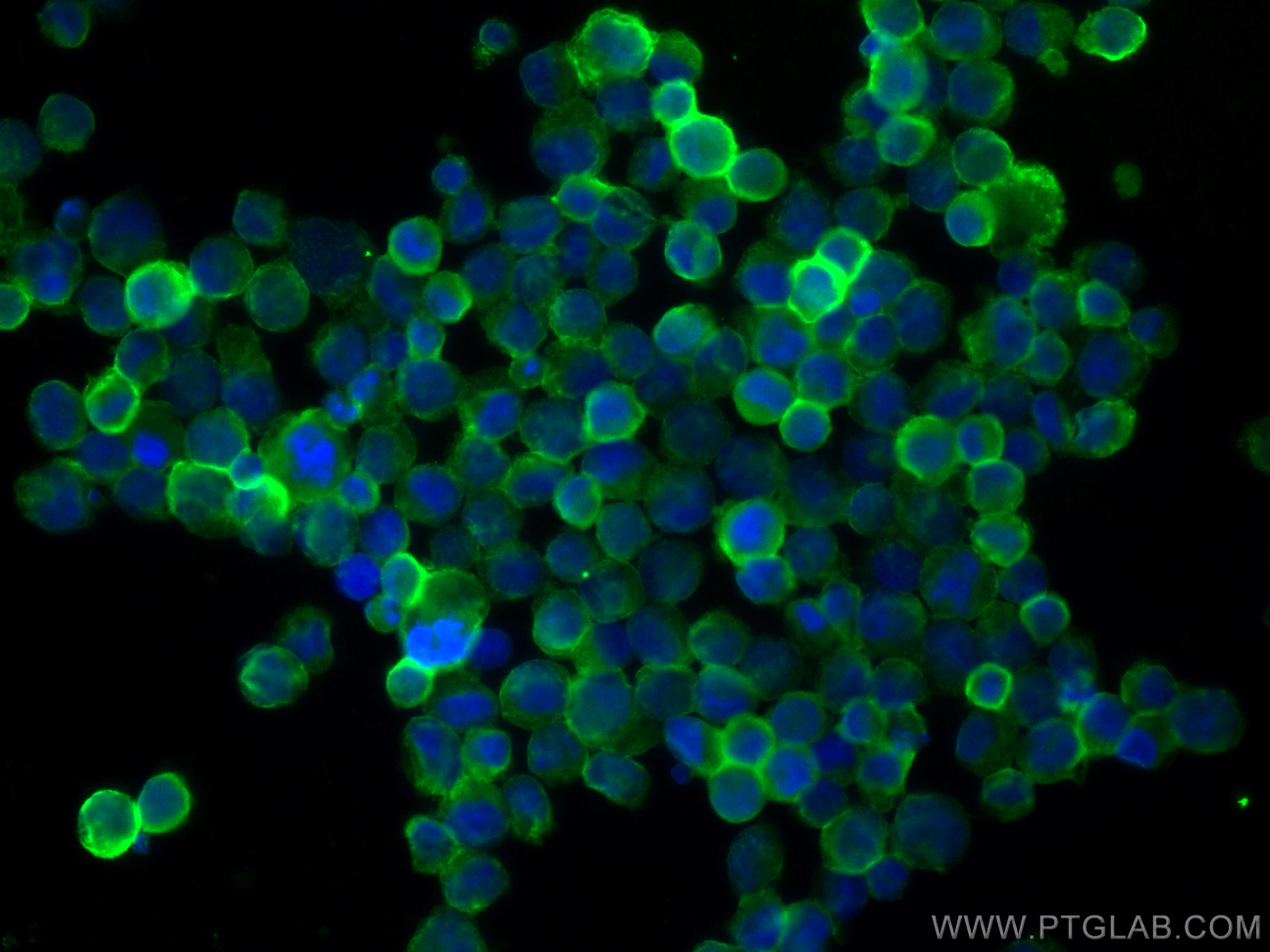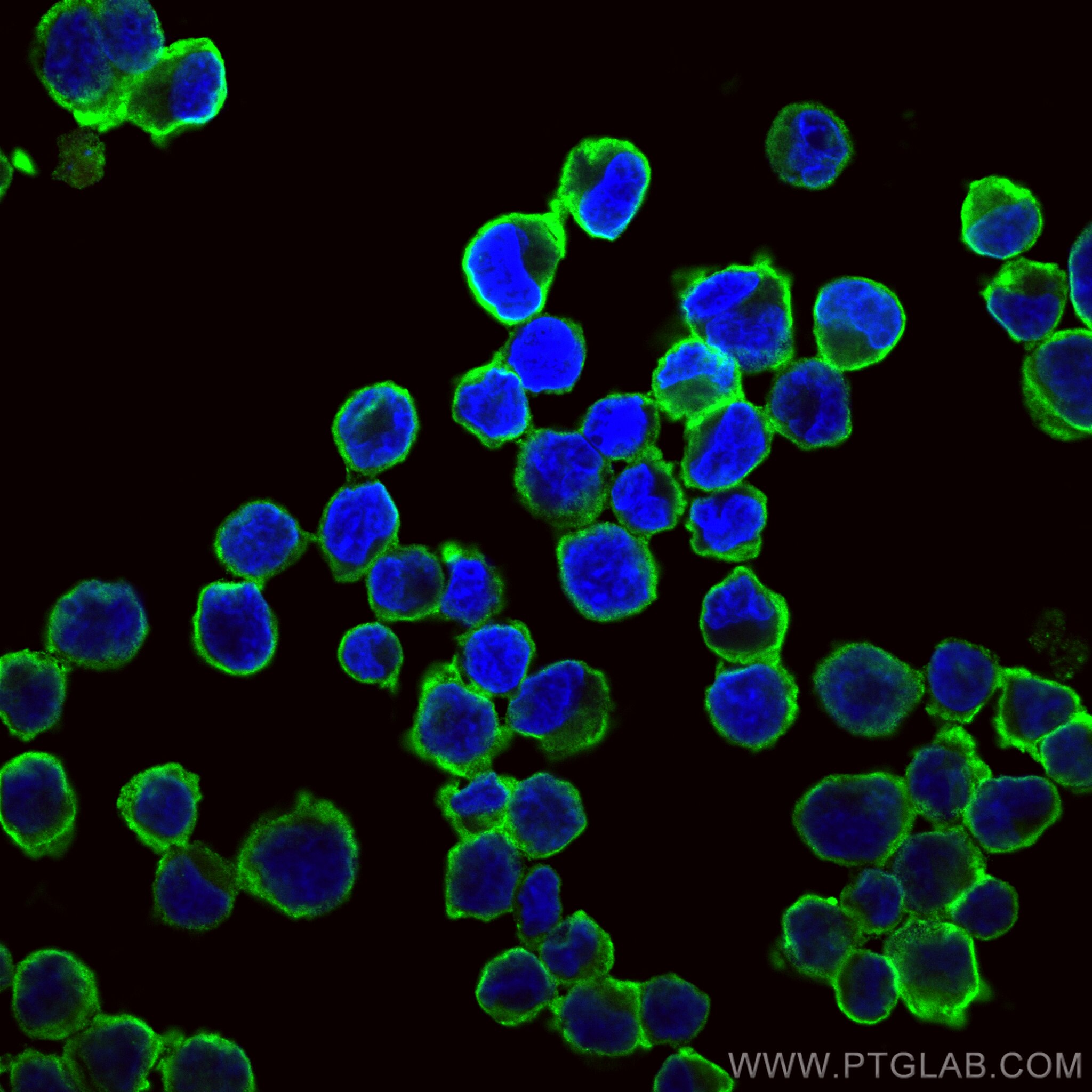- Phare
- Validé par KD/KO
Anticorps Monoclonal anti-CD71
CD71 Monoclonal Antibody for WB, IHC, IF/ICC, IF-P, IP, ELISA
Hôte / Isotype
Mouse / IgG2a
Réactivité testée
Humain
Applications
WB, IHC, IF/ICC, IF-P, IP, ELISA, Blocking assay
Conjugaison
Non conjugué
CloneNo.
3C11F11
N° de cat : 66180-1-Ig
Synonymes
Galerie de données de validation
Applications testées
| Résultats positifs en WB | cellules U-251, cellules A431, cellules A549, cellules HeLa, cellules HepG2, cellules K-562, cellules Raji, cellules TF-1, cellules U2OS |
| Résultats positifs en IP | cellules HeLa |
| Résultats positifs en IHC | tissu placentaire humain, tissu de cancer du sein humain il est suggéré de démasquer l'antigène avec un tampon de TE buffer pH 9.0; (*) À défaut, 'le démasquage de l'antigène peut être 'effectué avec un tampon citrate pH 6,0. |
| Résultats positifs en IF-P | tissu de cancer du sein humain, cellules MCF-7 |
| Résultats positifs en IF/ICC | cellules MCF-7, cellules K-562 |
Dilution recommandée
| Application | Dilution |
|---|---|
| Western Blot (WB) | WB : 1:5000-1:50000 |
| Immunoprécipitation (IP) | IP : 0.5-4.0 ug for 1.0-3.0 mg of total protein lysate |
| Immunohistochimie (IHC) | IHC : 1:2000-1:8000 |
| Immunofluorescence (IF)-P | IF-P : 1:200-1:800 |
| Immunofluorescence (IF)/ICC | IF/ICC : 1:200-1:800 |
| It is recommended that this reagent should be titrated in each testing system to obtain optimal results. | |
| Sample-dependent, check data in validation data gallery | |
Applications publiées
| KD/KO | See 2 publications below |
| WB | See 26 publications below |
| IHC | See 2 publications below |
| IF | See 5 publications below |
Informations sur le produit
66180-1-Ig cible CD71 dans les applications de WB, IHC, IF/ICC, IF-P, IP, ELISA, Blocking assay et montre une réactivité avec des échantillons Humain
| Réactivité | Humain |
| Réactivité citée | Humain |
| Hôte / Isotype | Mouse / IgG2a |
| Clonalité | Monoclonal |
| Type | Anticorps |
| Immunogène | CD71 Protéine recombinante Ag21612 |
| Nom complet | transferrin receptor (p90, CD71) |
| Masse moléculaire calculée | 85 kDa |
| Poids moléculaire observé | 90 kDa |
| Numéro d’acquisition GenBank | BC001188 |
| Symbole du gène | CD71 |
| Identification du gène (NCBI) | 7037 |
| Conjugaison | Non conjugué |
| Forme | Liquide |
| Méthode de purification | Purification par protéine A |
| Tampon de stockage | PBS with 0.02% sodium azide and 50% glycerol |
| Conditions de stockage | Stocker à -20°C. Stable pendant un an après l'expédition. L'aliquotage n'est pas nécessaire pour le stockage à -20oC Les 20ul contiennent 0,1% de BSA. |
Informations générales
CD71, also known as transferrin receptor protein 1 (TfR1), is a transmembrane glycoprotein composed of two disulfide-linked monomers, each of 90 kDa molecular weight. Each monomer binds one holo-transferrin molecule creating an iron-Tf-TfR complex which enters the cell by endocytosis. CD71 is present on actively proliferating cells and is essential for iron transport into proliferating cells.
Protocole
| Product Specific Protocols | |
|---|---|
| WB protocol for CD71 antibody 66180-1-Ig | Download protocol |
| IHC protocol for CD71 antibody 66180-1-Ig | Download protocol |
| IF protocol for CD71 antibody 66180-1-Ig | Download protocol |
| IP protocol for CD71 antibody 66180-1-Ig | Download protocol |
| Standard Protocols | |
|---|---|
| Click here to view our Standard Protocols |
Publications
| Species | Application | Title |
|---|---|---|
Adv Sci (Weinh) Sirtuin1 Suppresses Calcium Oxalate Nephropathy via Inhibition of Renal Proximal Tubular Cell Ferroptosis Through PGC-1α-mediated Transcriptional Coactivation | ||
Chem Eng J Functionalized biological metal–organic framework with nanosized coronal structure and hierarchical wrapping pattern for enhanced targeting therapy | ||
Cell Death Dis Super-enhancer-driven MLX mediates redox balance maintenance via SLC7A11 in osteosarcoma | ||
J Cell Biol The deubiquitinase ZRANB1 is an E3 ubiquitin ligase for SLC7A11 and regulates ferroptotic resistance | ||
Cell Biosci Chemical screen in zebrafish lateral line identified compounds that ameliorate neomycin-induced ototoxicity by inhibiting ferroptosis pathway | ||
Free Radic Biol Med Targeting the Na+/K+ ATPase DR-region with DR-Ab improves doxorubicin-induced cardiotoxicity |
